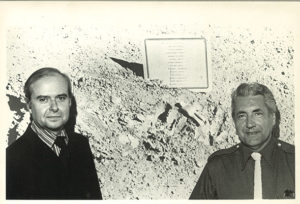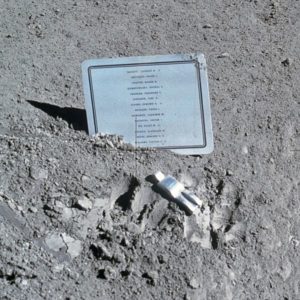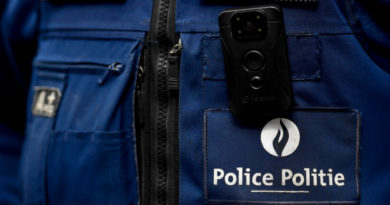Fun Fact: Belgian artist only person to have art on the moon
The moon: the furthest humanity has gone in the pursuit of knowledge and exploration. The large white dunes and sweeping craters lend itself as a vast tundra that has the occasional scattering of one of nearly 100 artefacts sent for the advancement of science. Despite the scientific nature of much of what’s there, the moon actually holds one piece of art: a small statue named « The Fallen Astronaut » by Belgian artists Paul Van Hoeydonck.

A small stylized figure meant to depict an astronaut in a spacesuit is on the moon along with a placard of names of astronauts and cosmonauts who have died in the advancement of space exploration. The statute is meant to serve as a commemoration and was installed at a section of the moon named Hadley Rille on the 1st of August 1971 by spacecraft commander aboard the Apollo 15, David Scott, on his third spaceflight and first time on the moon.

The idea for the statue came about when Hoeydonck and Scott met at a dinner party. Scott laid out the specifications for the statue: the sculpture was to be lightweight but sturdy, capable of withstanding the temperature extremes of the Moon; it could not be identifiably male or female, nor of any identifiable ethnic group.

Although later approved by NASA, the statue was secretly smuggled onboard the spacecraft in Scott’s spacesuit to avoid detection. It was only revealed what had been done once they completed the mission.
After public disclosure, the National Air and Space Museum requested that a replica be made for public display. The replica was given to the Smithsonian Institution on 1972.
Controversy later arose when Hoeydonck geared up to sell 950 copies of the statue, claiming that his and Scott’s agreement stipulated his right to do so. Scott denied this, claiming that the art-work on the moon was agreed to be kept anonymous to avoid a policy that forbade commercial exploitation of the US government’s space program.
With pressure from NASA, Hoeydonck agreed after selling just one piece not to sell anymore, and Scott, along with the other astronauts onboard, were summoned to the Senate as a result of being involved in another case on the Apollo 15. In 1978 the Justice Department ruled that although the crew had broken some space-agency rules, they did nothing illegal and were not intending to sell the stamps. Despite NASA would have approved letting them do so had they been asked, none of the crew ever went to space again.



